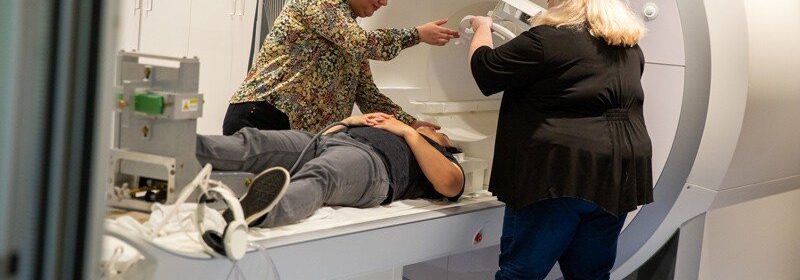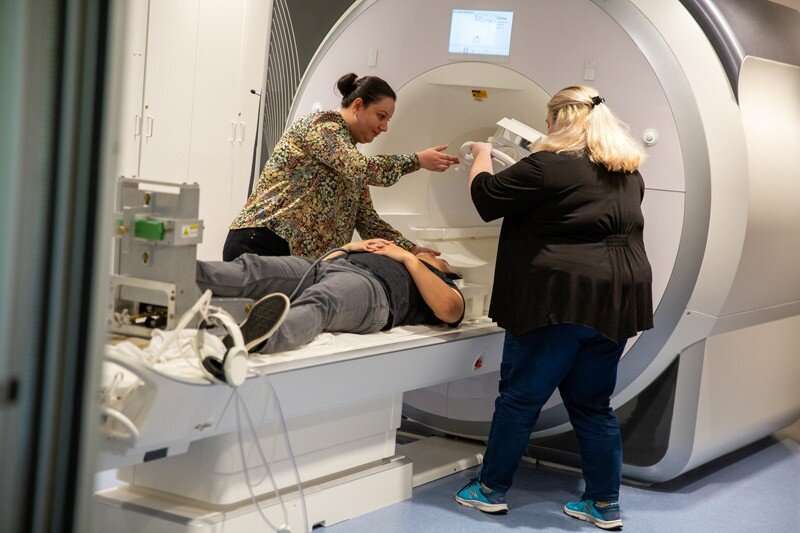ofloxacin tablets 100mg


Parkinson’s disease is a common neurodegenerative disorder that affects the way people move. Often beginning with small tremors in the hand, the disease progresses to affect a person’s gait and balance.
But the majority of what’s known about the brain changes underlying these symptoms stems from magnetic resonance imaging (MRI) studies focusing on the upper extremity.
“Gait and balance disturbance are common in Parkinson’s disease and are a major contributor to increased disability and decreased quality of life,” said Roxana Burciu, an assistant professor of kinesiology and applied physiology in the University of Delaware College of Health Sciences. “To design efficient interventions that improve gait and balance, provilgil we need to gain a better understanding of how the brain controls the lower extremities.”
Because quality MRI scans depend on stillness of the patient, studying the brain changes in people with Parkinson’s disease who exhibit lower limb symptoms proves challenging.
But Burciu has forged an innovative path forward.
Groundbreaking research recently published in the journal Neuroimage Clinical, demonstrates that multiple motor regions in the brain are underactive during lower limb movements in people with Parkinson’s disease.
“Adequate lower limb strength and motor control are essential for mobility, and people with Parkinson’s disease experience impaired force control within the muscles that are critical for effective ambulation,” Burciu said.
The study used functional MRI (fMRI), which measures small changes in blood flow that occur when a specific region of the brain is active.
“Here, fMRI revealed areas of the brain that were activated when people with and without Parkinson’s disease moved their feet,” Burciu said.
Burciu worked with a company in Florida to develop a unique foot device made of MRI-compatible materials. The device, used in Burciu’s Motor Neuroscience and Neuroimaging Lab, is highly effective in minimizing head movement, which can often confound MRI scans.
“The device not only helps keep the head as still as possible but is also versatile and can be used on the left or right foot,” Burciu said.
The device could be useful in studies involving other clinical populations as well.
“It could aid in studies that aim to investigate the effects of rehabilitation methods on lower limb function in people who’ve experienced stroke,” Burciu said.
Burciu’s research involved 21 healthy older adults and 24 individuals with Parkinson’s disease, who have halted taking Parkinson’s medication for approximately 12-14 hours.
“We trained people on how to perform simple movements in the MRI scanner that involved dorsiflexing their ankle in response to a visual cue that acted as a ‘go’ signal to contract muscles in the ankle,” Burciu said. “Ankle dorsiflexion is a key player in gait. Even if people are lying in the scanner, an ankle dorsiflexion task is meant to engage the same circuit which would facilitate walking.”
Her research found that the basal ganglia, primary motor cortex, and cerebellum portions of the brain were underactive in persons with Parkinson’s disease compared to healthy older adults.
In cases of Parkinson’s disease, with severe lower limb symptoms, the primary motor cortex, a key brain structure known to be involved in controlling lower extremity muscles, was also found to be underactive.
Burciu’s study also identified that the cerebellum appears to be more engaged in the dorsiflexion task than any other region of the brain; this activation was also impaired in people with Parkinson’s disease.
“There’s a lot of controversy on the role of the cerebellum in the pathophysiology of Parkinson’s disease,” Burciu said. “The cerebellum is, however, an important area of the brain that helps us coordinate movements. Although this area is known not to be affected by the neurodegeneration caused by Parkinson’s disease, our results suggest that the cerebellum may not function at full capacity, warranting further attention to its role in disease progression.”
In the future, Burciu seeks to expand her research to study how disease progression affects the brain circuit controlling the lower extremities in Parkinson’s disease and determine whether transcranial direct current stimulation, a safe, non-invasive, and painless brain stimulation technique that uses low-intensity electrical currents to stimulate specific parts of the brain, can be used to boost cerebellar activity and improve lower limb symptoms in people with Parkinson’s disease.
More information:
Jae Woo Chung et al, Imaging the lower limb network in Parkinson’s disease, NeuroImage: Clinical (2023). DOI: 10.1016/j.nicl.2023.103399
Journal information:
NeuroImage
Source: Read Full Article